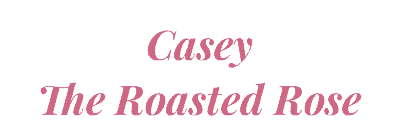Here's my personal experience with eating for perimenopause as a Cordon Bleu chef in my 40s who has studied hormone health.
Hi, my name is Casey Bumpsteed. I'm a mom and wife, a recipe developer and food photographer with a special interest in how food and lifestyle can positively impact women. As is relevant to my life and those in my close circle, my food focuses on perimenopause and menopause, PCOS and immunity.
You'll find my credentials here so please take a look before you dive in. Note that this article is meant purely for informational purposes. I am not a medical practitioner and highly recommend that women consult with their healthcare provider before making any major lifestyle changes.
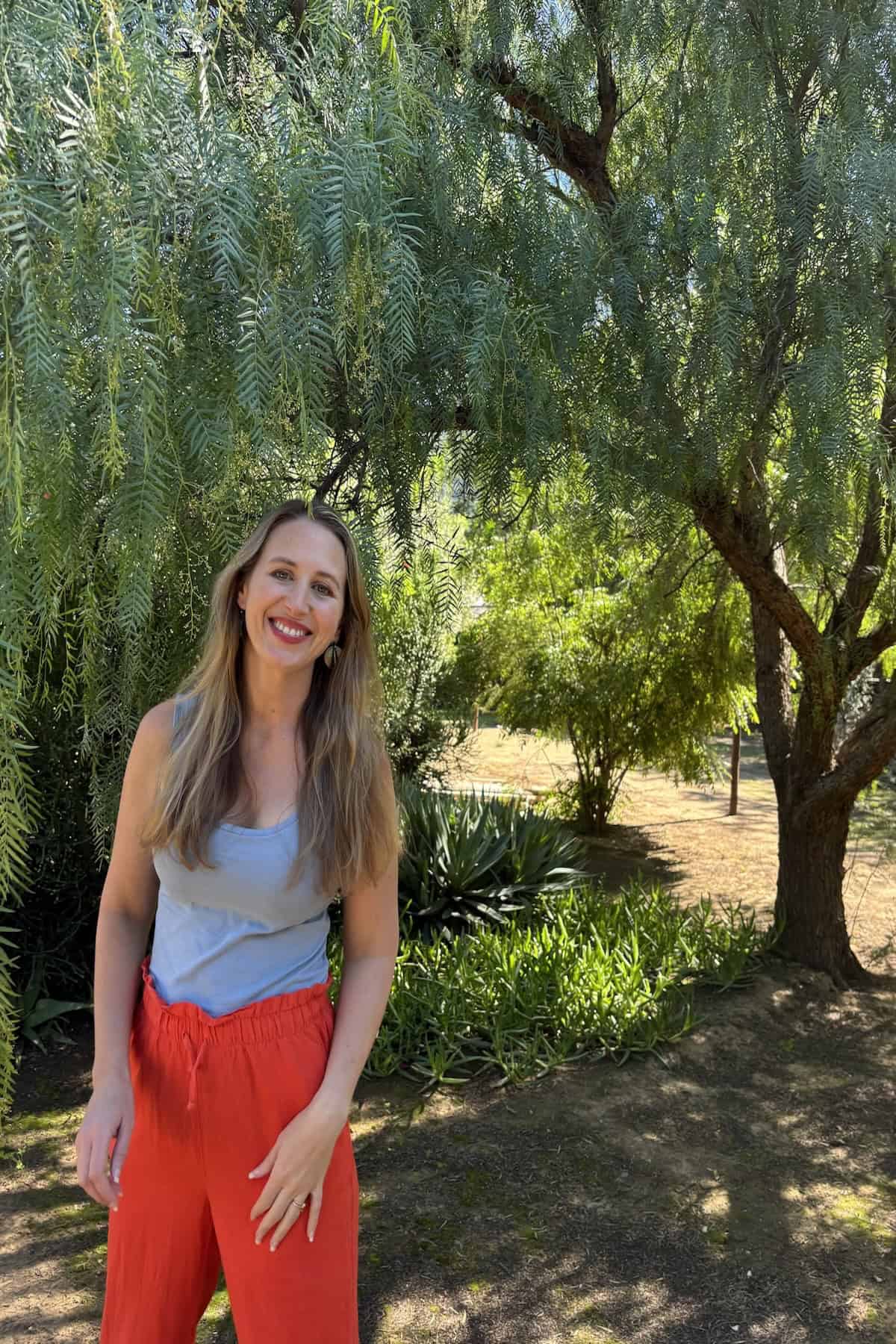
At around 38, I began to notice the first signs of my hormones shifting. The most obvious sign was some unwelcome weight gain around my mid-section (subcutaneous fat), which, considering I had never been anything but slim and trim my entire life, was out of my comfort zone.
Between 38 and 40, my symptoms developed further until I was experiencing the following to different degrees.
- Waking between 2 am and 3.30 am.
- Fatigue in the afternoon; I needed a daily nap, y’all!
- The development of a totally irrational fear of flying and driving over bridges. At times, to the point of panic attacks. To be honest, I've never loved flying, despite having traveled since I was a child, but this was a new level of fear.
- Anxiety and feelings of depression, generally in line with the run-up to my period. Here's more reading on this via NIH.
- The memory of a small blind goat. Like, no short-term memory.
- A dry left eye. Yup.
- Bloating. I’ve always been a bit prone to the odd gluten bloat, but it leveled up. Bloating and perimenopause go hand in hand for many women.
- Strong PMS symptoms and mood swings via my cycle.
- Constipation before my period.
- Hair loss and a super dry scalp. Lovely stuff.
- Breast tenderness.
- Sore or stiff shoulders.
What’s been interesting since studying through The Institute of Integrative Nutrition and working with friends and clients who are going through Perimenopause and dipping their toes into menopause is the myriad of symptoms different people experience.
Here are a few more I’ve learned about but not necessarily experienced myself:
- Thinning skin and dry skin
- Acne
- Hot flashes (no new news here)
- Dizziness
- Low sex drive
- Stiff or sore joints
- Heart palpitations
- Urinary urgency
Charming, right? Anyway, here we are, and luckily, there’s a fair amount that can be done from a diet and lifestyle perspective. Having said that, I fully believe in bio-individuality.
Each body is different and requires a customized approach. This article is about my experience, but as someone who is certified in Hormone Health, I strongly suggest you visit your healthcare practitioner before making any major diet or lifestyle changes.

Based on my specific symptoms and my blood results, I worked on the following and the results have been fantastic:
- Vitamin D: My blood tests showed I was low in vitamin D, so under my doctor’s guidance I began supplementing. Below I’ve listed the supplements that have worked for me personally, but I recommend speaking to your healthcare provider before starting any.
- Gluten caution: While I’m gluten cautious, I don’t cut it out. I eat gluten-based pasta once a week and the odd slice of bread, but it’s never more than 2-3 times a week, and the impact on my bloating is tremendous. I try to eat sourdough bread where I can and rarely have store-bought sauces, condiments, and dressings where gluten tends to hide.
- Phytoestrogens: I personally avoid foods high in phytoestrogens, like soybean oil and modified soy, because I noticed they didn’t sit well with me. Some women include them, others avoid them; it’s a very individual choice. Here's more reading on phytoestrogens via the Mayo Clinic.
- Omega 3: I prioritize foods loaded with Omega 3s and Vitamin B to help my moods and energy.
- Calcium and fiber: Loaded up on calcium dense and fiber rich foods. Check out my list of weekly must-eats!
- High protein: For me, aiming for about 100g of protein a day feels right, especially since I strength train regularly. I find it easier to reach that goal if I start my mornings with a high-protein meal, which is why you’ll find loads of high-protein breakfast recipes on my blog. Also, eating well in the mornings just sets me up properly for my day. I try to eat protein at every meal and I mix animal and plant protein.
- Anti-inflammatory meals: I try to focus on low or anti-inflammatory recipes and ingredients where possible.
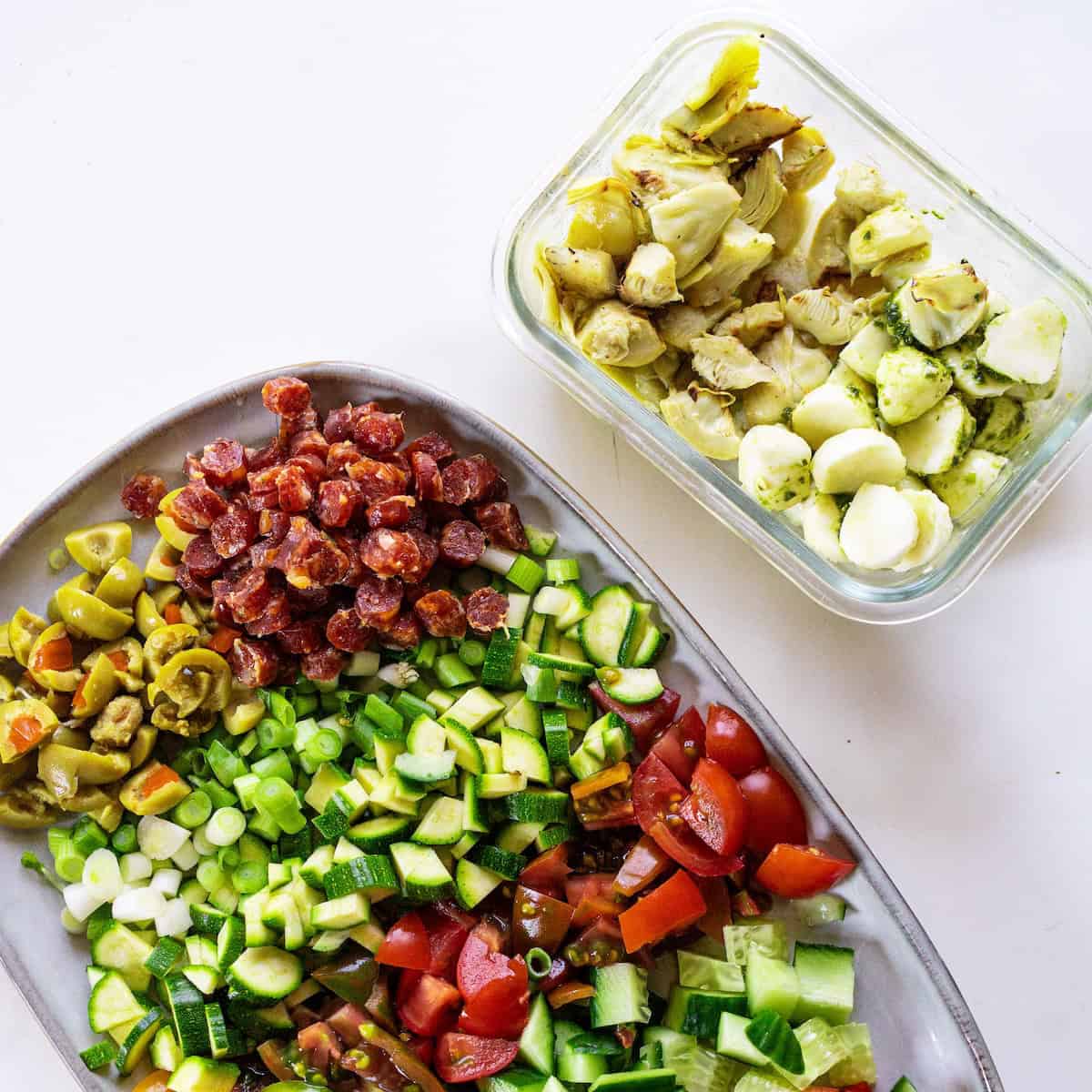
Blood Sugar and Stress in Perimenopause
During my studies at IIN, I learned that women may be more prone to insulin resistance in perimenopause. This is something I discussed with my doctor, and I encourage anyone with symptoms to bring it up with their healthcare provider.
Another issue to take note of is your stress. I found this really interesting while studying Hormone Health. What I’ve learned (and personally experienced) is that stress feels more intense during perimenopause.
I've learnt that insulin and blood sugar response are affected by stress, so it’s really important to manage my stress in the best way for ME, during this period. I mean, honestly, when is it not important?!
Changes I made in the kitchen to support my perimenopause phase
Let me preface by saying I am a mom of two kids; a teenage girl who suffers from a genetic condition affecting her immune system and a 10 year old son with a large appetite. I am married to the most gorgeous, wonderful man (that God has ever produced) who has his own set of needs as a very active, almost pro athlete who also only eats venison and seafood in the animal protein category.
I just had to add that info to put into the picture: My kitchen and home produce for a large variety of needs. So, as the chef and producer of 90% of the food in the house, creating recipes that work for everyone has been key for me.
I work for myself as a full-time food content writer and photographer. So, I'm busy, is my point.
Here are some of the changes I've made as a Cordon Bleu-trained chef to support my perimenopause symptoms and phase:
- Making to scratch swaps: I make my own sauces, condiments and dressings, where I can. This is the easiest way for me to crowd out refined sugar because that's generally where they hide.
- Home-processed: Basically I eat as much whole food elements as possible. Where I can, I make my own bread but I don't always have time and that's ok! I try to avoid foods that include chemical processing but sometimes I can't and I don't sweat every ingredient's source. 80% right works for me.
- I include anti-inflammatory spices and ingredients in my recipes and meals.
- Drinking sleepy drinks in the evening: I've fallen in love with blending teas that lul me at night and replace wine!
- Gut-health: Personally, what works for me has been reducing gluten rather than eliminating it. I eat gut nourishing and supporting ingredients.
- Sweet treats: Guys, I'm a chef. I love a pud. I love a tart. I love all the things. But, I've learned to skip the sugar in my tea and coffee and I eat sweet treats on special occasions. I've developed lower-sugar versions of my favorite recipes. I've raised my kids with a low sugar diet at home and the belief that sweet treats are for special occasions, not every day. This is my personal approach and it works for our home and our bodies. We eat dessert once a week and on special occasions. I try to make desserts with added protein and fiber.
- Reducing alcohol: This has been tough because I come from a culture in South Africa where wine and beer flow. They flow on a Friday like they flow on a Tuesday. Anyway, I've switched from 1 glass of wine a night to 2 glasses a week. It's made a massive difference to my life!
- Switched up my breakfast game: My breakfasts are now either savory or they are loaded with fiber, fat and protein plus a few berries.
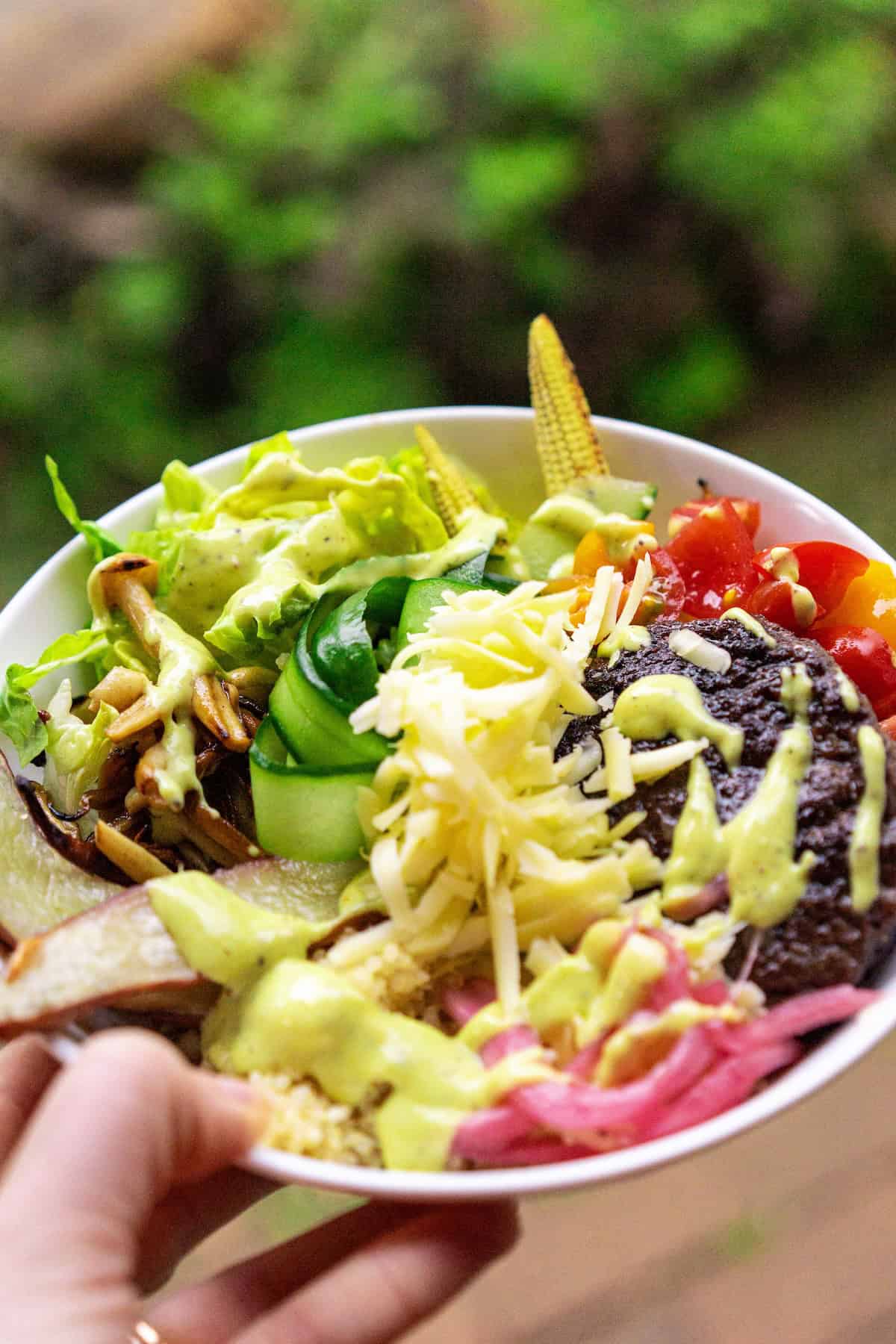
My Perimenopause Grocery List
These are the ingredients I try to include as much as possible in my daily, weekly and monthly meals. I don't always get it right, especially if I'm travelling or out of home life routine but I do my best.
| How often I eat them | Ingredients |
| Daily | Leafy greens (spinach, kale, chard) Cruciferous veggies (broccoli, cauliflower, Brussels sprouts) Free range eggs Flaxseeds or chia seeds Walnuts Pumpkin or sunflower seeds Olive oil or avocado oil Berries High-quality protein (plant or animal) |
| Weekly | Wild-caught fatty fish (salmon, sardines, mackerel, tuna) Avocados Almonds Brazil nuts Sweet potatoes Kiwi fruit (seasonal) Red peppers Organic yogurt or other probiotics Homemade/wholegrain bread (e.g. sourdough) Chamomile |
| Monthly/Occasionally | Dark chocolate (70%+) Cherries Bananas Figs Pomegranate molasses and seeds Maca root Ashwagandha Nettle Turmeric root Hibiscus and butterfly pea flowers |
My Home and Lifestyle Changes for Perimenopause
- Cleaning products: I was lucky enough to work with Nu-Eco for 5 years. Nu-Eco is a South African range of 100% natural cleaning products that is manufactured with highly effective bacteria and plant extracts. For me, using chemical-free laundry, surface, carpet, and floor cleaners is really important. The same goes for air fresheners. I also use their body wash products in our showers at home.
- I avoid plastic and try to use glass containers for food instead.
- I try to skip using my phone at night after 8pm; I'm not always great at this.
- Yoga once a week. There are so many benefits to doing yoga but the combination of calm + mobility has worked so well for me.
- I've found that as my kids have grown up a bit, I've needed to redefine my identity to a degree. I've always worked, but being in a phase where my kids are slightly less reliant on me has given me the time to refine my purpose. This is something I feel is really important to me as a woman in this phase, and it helps me feel positive about the future.
- Interconnectedness: This might sound a little abstract, but building authentic community has been one of the most powerful ways I combat feelings of anxiety. As someone who feels deeply about the issues in our world, community building brings me calm. For me, this looks like being rooted in my church community and leaning into interdependence with my husband. I’ve also entered a phase of being more intentional and selective about the relationships I choose to nurture.
- Goal I need to get to: Reading books over scrolling the socials.
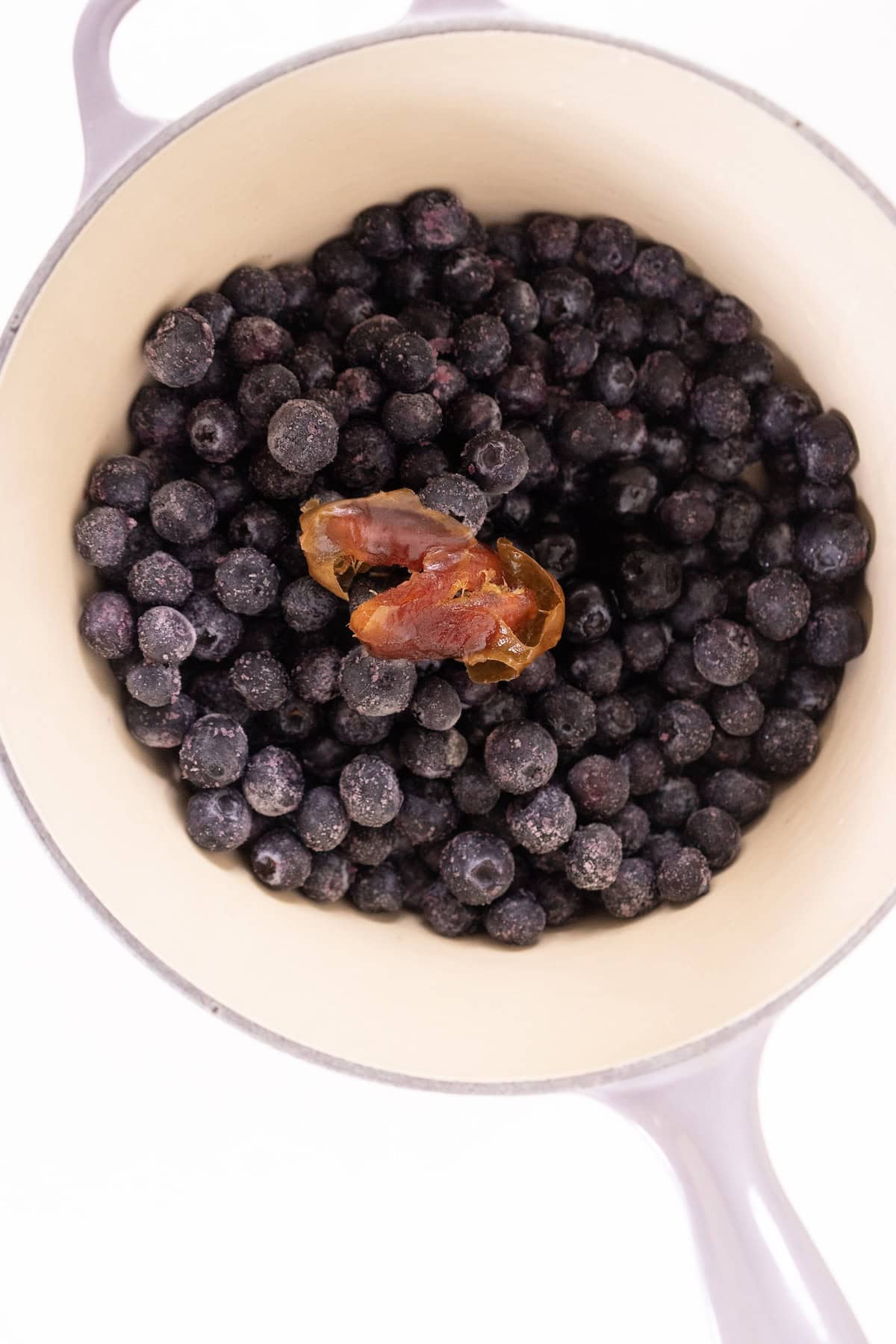
My Exercise Routine for Perimenopause
I am the least athletic person in my circle of friends. Having said that, I've found what works for me and has worked for me:
- Weight training 3 days a week. This is usually 2 trainer-led communal classes and 1 self-led class. Sometimes I only make it to the Monday class and then I do my own thing for the other 2 days.
- 1 strength and conditioning class a week. My worst, but I do it.
- 1 yoga class or pilates class a week.
- In between days, I'll do 30 minutes on the bike or treadmill just to move my body.
Side note: I absolutely hate running. If you're a perimenopausal lady and feel nervous about exercising because you think you have to run. I'm here to tell you that you don't need to feel this way.
My Best Supplements for Perimenopause
Please note that these supplements were developed in consultation with my doctor, tailored to my individual needs, and based on my blood test results. I haven't included the amounts I take here because this should be determined in consultation with a healthcare practitioner.
- Vitamin D: Despite living in sunny South Africa, my levels were low.
- Omega-3 fatty acids: For my brain, heart and joints and all round anti-inflammatory support.
- Vitamin B complex (B6, B12, Folate)
- Creatine: There is so much out there about creatine right now. I came across this NIH Report highlighting creatine’s potential benefits for muscle and brain health. I’ve personally found it helpful for energy and strength, but I use it under my doctor’s guidance.
Some women explore supplements like magnesium, calcium, probiotics, or herbal options such as ashwagandha or Evening Primrose oil. I haven’t tried all of these myself, but I always recommend checking with a healthcare provider before adding anything new.
This is my personal story. Please consult a healthcare provider for individual guidance.
